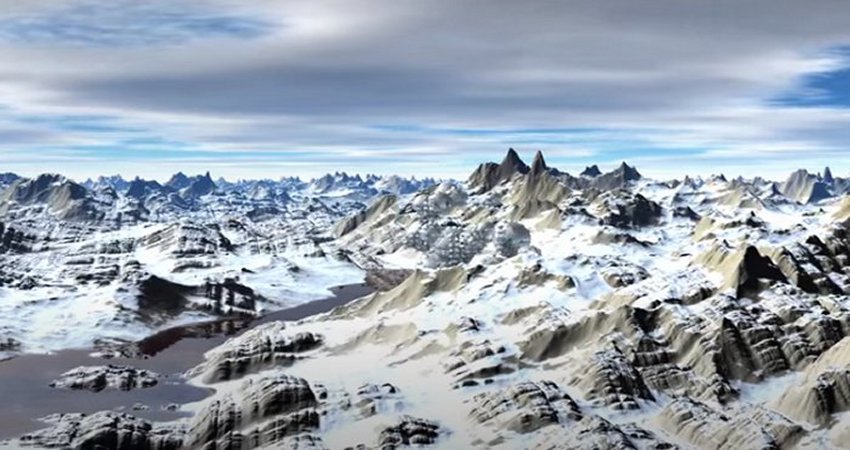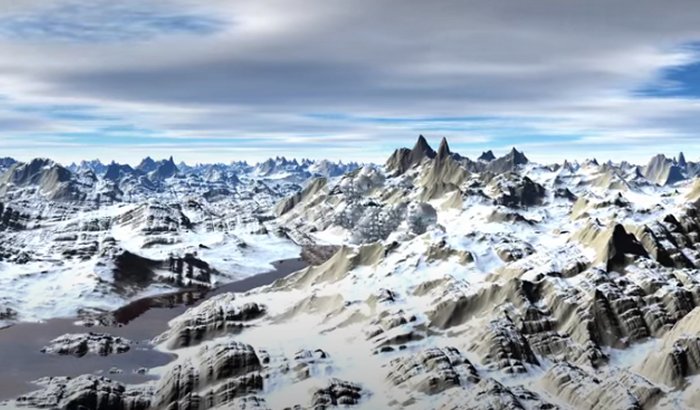Conny Waters – MessageToEagle.com – Ever since the 17th century, human bones have been emerging from the spring-containing lake burial site at Levänluhta in Southern Ostrobothnia, western Finland.
A research team coordinated by the University of Helsinki has dated the bones of dozens of Iron Age residents of the Levänluhta site in Finland. The results of the study show that Levänluhta people could survive a climate disaster thanks to their extremely broad range of livelihoods.
Fimbulwinter (an unusually cold and harsh winter) has been said to have caused a collapse in farming in the areas surrounding Sweden and Estonia.
Levänluhta is among the most unique archaeological sites. Bones belonging to nearly a hundred individuals who died in the Iron Age have been discovered in the middle of the Southern Ostrobothnia plains in western Finland since the 17th century.
The deceased were buried during the Iron Age, roughly between the 4th and 9th centuries, probably in a lake located at the site at the time, subsequently transformed into wetland due to the post-glacial rebound as well as, later on, to arable land due to human activity.
Today, this ancient burial site reveals its secrets and gives an overview of the dietary habits based on terrestrial, marine, and freshwater ecosystems, as well as of sources of livelihoods throughout the Levänluhta era.
In the middle of the Levänluhta era, the most severe climate disaster in 2,000 years took place. In the 540s volcanic eruptions initiated a cold and dark period lasting several years, possibly reflected in folktales across the northern hemisphere.
See also:
Sami People: Facts And History About The Only Indigenous People Of Most Northern Europe
Before Ragnarok: Horrifying Fimbulwinter In Norse Mythology Was Based On Real Events
Recently the researchers working in the project headed by Oinonen have found a link between the disaster and a reduction in the quantity of light observed in the carbon isotopes found in the annual growth rings of trees in Lapland between 541 and 544.
“If you want to date Fimbulwinter, the three successive winters mentioned in Scandinavian sagas, this is the best candidate,” Docent Markku Oinonen, director of the Laboratory of Chronology at the University of Helsinki says in a press release.
The carbon and nitrogen in human food end up in the skeletal system and soft tissues as building blocks for the human body. There are three isotopes of carbon and two of nitrogen, and information pertaining to past events is recorded in the contents and ratios of these isotopes.
“The isotope data of the human remains at Levänluhta is divided into three clearly distinct groups, a unique occurrence around the Baltic Sea area,” says Oinonen.
The Levänluhta spring. Image credit: Anna Wessman
There is variation between the isotope ratios of terrestrial, marine (the Baltic Sea), and freshwater food sources included in the background data used in the study. Thanks to this variation, dietary modeling based on isotopic analyses generate information on the relative shares of these different food groups.
It appears that most of the people found buried in Levänluhta exploited all three food sources available to them: the Gulf of Bothnia, the plains and wilderness surrounding them, and the Kyrönjoki river flowing close by.
In most of the remains, the share of terrestrial food sources was roughly 85%, especially protein-rich foodstuffs.
However, in certain remains approximately half of the food had been caught at sea, indicating seal hunting or fishing in the Gulf of Bothnia. Furthermore, some people used no freshwater food resources at all. There might be a possible connection to archaeologically observed links with locations further away in the Baltic Sea area, according to researchers.
See also: More Archaeology News
The largest group of people continued to supplement their diet with marine food, actually increasing its presence in the human remains buried in the middle of the 7th century. Protein-rich food indicates produce derived from animals, and it appears that, instead of farming, most of the population probably based their sustenance on animal husbandry and hunting. In fact, fur trade has traditionally been thought of as the source of wealth during the Iron Age in these southern roots of the Suomenselkä water divide.
Prior genetic research and place name data indicate a connection between the Levänluhta population and the Sámi.
Signs of the diverse livelihoods of Iron Age Sámi have also been previously observed in Sweden on the same latitudes. Indeed, the researchers are considering whether the lake burial site of Levänluhta could be a manifestation of sáivas, the sacred spring-containing lakes in the Sámi mythology.
Written by Conny Waters – MessageToEagle.com – AncientPages.com Staff Writer








